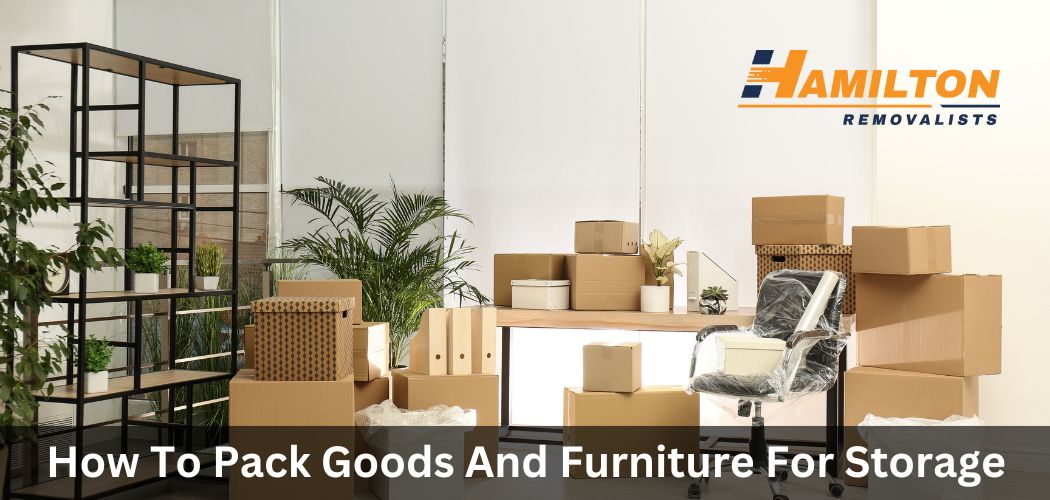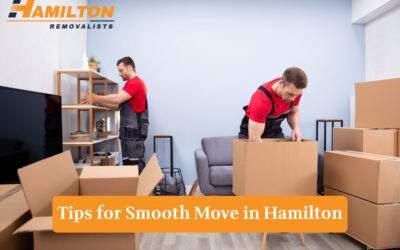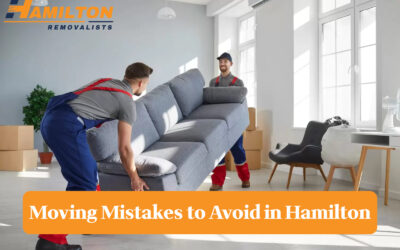Your home has furniture in every area; therefore, we must grasp how to pack furniture for long-term storage. Self-storage can be helpful, especially if you’re not ready to part with your special items, whether you have a set of antique chairs you no longer have room for, a bright pink sofa that doesn’t go with your décor, or it’s time to replace the dining room table.
However, you must pack your furniture carefully to maintain it in good condition while in storage. Also, look at the Hamilton Removalists website for better tips from their front module. To safely keep your furniture for extended periods, or at least until that pink sofa is again in style, we’ve produced this guide to assist you in preparing it for self-storage.
Clean And Dry Your Furniture Completely
Make sure every piece of furniture is pristine before placing it in a storage container. This entails properly washing and drying every item. To use the proper cleaning methods, heed the following advice:
- Utilize a vacuum to get rid of any dirt or debris, and use upholstery cleaner to eliminate any odors from the upholstery.
- Before using glass cleaner to remove stains, dust the glass.
- Before using a multipurpose cleaner, dust the steel.
- Leather: Before using a leather cleaning, vacuum the area.
- Wood: Dust before using a light soap and water solution.
As all pieces will need to be thoroughly dry, you should start cleaning at least 24 hours before packing furniture for storage. Mold and mildew issues can arise from even the smallest amount of moisture. Specifically, quickly dry your furniture with a hairdryer before covering it.
Prepare Your Furniture With Care
You should prepare your belongings for storage once they are clean and dry. Make sure to wipe off things with a leather protectant and a soft cloth before placing leather furniture (such as leather couches and armchairs) in a storage unit. The product suggested on the manufacturing label should also be used to treat wooden furniture. Additionally, to avoid breakages, mark any substantial pieces of glass or mirror with masking tape with an “X” and inspect steel for rust. Use rust removal to get rid of it before wrapping since rust would spread if left untreated.
Break Down What You Can
Take apart any furniture you can, including bookcases, desks, and other items, to simplify transport. Consider taking out the legs or removing drawers from furniture if you can only disassemble it partially. Remember to tape a bag containing hardware and small parts to the back of the furniture or inside the drawer.
This will not only take up room in your storage facility but also raises the possibility of your goods being damaged in transportation. The likelihood of anything falling over and destroying something increases with its size. Disassembling leather furniture will also enable you to wrap the leather portions tightly enough to stop any moisture from penetrating if you keep it in a storage unit.
However, it would help if you refrained from disassembling old-fashioned furniture. These are too delicate to withstand the strain of being unscrewed and then screwed back together.
Cover/Wrap Furniture
To keep your furniture in better condition, it is crucial to cover it. Use old sheets, blankets, or drop cloths to add a layer of protection and prevent dust and debris damage. In addition, it’s essential to wrap or cover your furniture in a breathable fabric to stop decay growth.
Although it’s common knowledge that plastic wrap is a popular method of protecting furniture, it’s crucial to avoid overwrapping it. Also, avoid shrink-wrapping furniture if you reside in a particularly humid area. Packing paper should be used as a base for glass or ceramic artifacts before being padded with bubble wrap.
Use The Following Ways When Wrapping Your Items:
Leather and wood furniture should be wrapped in old blankets before being covered with packing tape. Applying packing wrap directly to hardwood or leather furniture may cause the materials to shrink and get damaged.
- Upholstery: You should cover upholstered furniture in permeable plastic wrap, which you may get from a storage company. The wrap must be both breathable and sufficiently tight to keep moisture out and avoid the development of odors.
- Glass: A Styrofoam box should be used to protect the glass piece before it is put inside a comparable size double-corrugated storage box.
Metal furniture should be covered in a soft material, such as an old pair of tracksuit pants, after being wrapped in plastic.
Shut Up The Floor
Furniture may absorb moisture from the floor and deteriorate as a result. Put plastic down on the floor to shield your furniture. You may lift the furniture by laying down pallets or cinder blocks, covering them with plastic sheets, and then piling them carefully.
Place Things Properly
Carefully arrange your furniture in storage after laying a plastic lining on the floor. Keeping your belongings, so they last correctly is crucial, even if you’re trying to save room. Sofas and couches should not be kept on their sides, and there should be some space between each item and the walls to allow for airflow.
It takes more than just packing everything inside and sealing the door to store furniture. Keep the following in mind when moving furniture into storage:
- Avoid packing furniture too tightly together. The goods need room to breathe; otherwise, they could start to smell musty and grow mold.
- Items can be “nested” inside of one another, with larger pieces acting as a shield for smaller ones. For instance, you can use your dining room table to keep your nightstand tables safe.
- Put nothing directly on the ground. Anything on the floor will be damaged if the room becomes damp. Instead, it would help if you placed wooden pallets on the floor before storing furniture in a storage facility. They’ll aid in keeping everything dry.
- Consider how you’ll remove the furniture from your apartment as well. Put the objects you need to remove in the front, keeping in mind what you need to do first. Put the laptops, desks, and chairs in front of the office while packing. The paperwork should be prioritized if you need to get people back to work immediately after moving.
House moves follow the same theory. Before the extra room wardrobe or childhood mementos, you will need your bed and sofa back.
Carefully Load Your Furniture Onto A Moving Truck
After wrapping your furniture, carefully transfer it to the moving vehicle. For safety, you must always select a car with a hydraulic lift or a ramp. To know exactly where you’re heading when you pick up the stuff, you should also create a moving plan. By attempting to cram your carefully wrapped furniture through a narrow hallway or door, you run the risk of damaging it. Instead, use only the proper manual handling techniques, which comprise:
- Always keep two or three individuals nearby to help you, and if you are facing problems with loading and moving, contact Hamilton Removalists.
- Hold them in both low and high positions to stop tall objects from falling over.
- Lift the furniture with your knees rather than your back.
- Utilize tools like lifting straps, shoulder dollys, and movement dollys to lessen the strain on your body.
- Make sure nobody is positioned behind any furniture placed onto the truck.
Properly Load Your Moving Truck To Reduce Potential Damage
You must carefully and securely carry the furniture to the storage container before storing it there. To guarantee that your furniture enters the storage area undamaged, you should:
- Place large goods around the truck’s walls, then minor stuff inside these larger ones for protection.
- Never assemble too many. There is less likelihood of anything tumbling over the lower you stack.
- Use strong straps to fasten everything carefully.
For Long-Term Storage, Take Climate Control Into Account.
A climate-controlled unit is a fantastic method to keep your furniture safe while in long-term storage! These units maintain a temperature range of 55 to 80 degrees Fahrenheit to lessen damage from humidity. However, your furniture can always help from a climate-controlled and temperature-regulated unit that is particularly crucial for long-term storage.
Contact A Specialist
Why not choose a reputable, secure storage company like Hamilton Removalists if you need help wrapping or packing furniture for storage because you lack the time or workforce to accomplish it? Your furniture will receive the security that only professionals can provide, and one firm will handle the wrapping, shipping, packing, and redelivery.
By following these steps, you’ll learn how to pack and wrap furniture for storage and put it in a storage unit so that you may retrieve it later in the same condition.
Get in touch to make your move stress free.
Contact Us on 078080810 Or
Email At info@hamiltonremovalists.co.nz
Related Articles
Tips for a Smooth Move in Hamilton
There are plenty of exciting and challenging parts to moving into a new home. Whether you move within Hamilton or from outside the area, proper planning and execution are what a smooth and stress-free relocation depends on. There's so much to do—from hiring...
The Most Common Moving Mistakes to Avoid in Hamilton
Moving is something huge that requires a planned effort and execution. Sometimes you are working with an average Hamilton furniture removal, and sometimes with specialized piano movers in Hamilton; it is pretty easy to get into mistakes that waste more of your time,...
How To Clean Carpet At Home: DIY Carpet Cleaning Tips
Carpeted floors bring warmth and comfort to our homes, but they also attract dirt, stains, and odors over time. Regular cleaning not only maintains the beauty of your carpets but also ensures a healthy living environment. If you're wondering how to clean your carpet...




